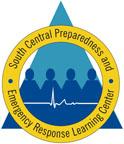
E012: Housing Sanitation and Safety
Course Description:
This course provides an introduction to housing sanitation and safety issues in America. The relationship between home environmental factors and health is the focus of the course. Emphasis is placed on how to identify and remediate unhealthy home conditions. Specific health topics such as lead poisoning prevention, asthma and injury are the focus.
Target Audience
Academic Faculty/Staff, Federal Government Employees, State Government Employees, Local Government Employees, Non-Government Employees and Students
Learning Objectives
- Understand the connection between housing and health. Be able to relate specific health effects to housing conditions
- Understand the principles of healthy housing. Be able to identify key federal agencies working on healthy homes policy
- Describe the relevance of housing code to healthy housing
- Name three ways indoor air quality can be impacted inside a home
- Identify at least 3 child safety hazards inside a home
- Describe populations at greatest risk for health problems in substandard housing
- Explain ways that healthy homes inspectors can improve the health of a home
Instructor:

Genevieve Birkby, MA, MPH
Genevieve Birkby, MA, MPH currently serves as Deputy Director for Community Programs for the Lead, Asthma & Injury Prevention Bureau, Healthy Homes Division, Baltimore City Health Department. She has worked in community-based public health initiatives since 2001, currently overseeing community-based healthy homes initiatives and a community-based environmental health project. She has previous experience coordinating a faith-based, lay health educator-led community partnership in breast and cervical cancer prevention in Chicago, and has worked in the BCHD Healthy Homes Division coordinating a CDC Healthy Housing demonstration grant.
Available Credit
- 3.00 Participation/CETulane Professional and Continuing Education (PaCE) awards 3.00 hour(s) of credit for completing E012: Housing Sanitation and Safety
Price
Required Hardware/software
System Settings
This course is designed to work most effectively if your computer and internet connection meet certain minimal requirements. This course can be accessed using a Windows 10 PC or a Mac with High Sierra1, Mojave, or Catalina. Pop-up blockers should be disabled when viewing the course. Internet Explorer 11 (for Windows 10), or the current version of Google Chrome, Mozilla Firefox, or Apple Safari (for Windows 10 and or Mac) is required. Many of our courses require Java and JavaScript enabled.
Links to External Websites
Links to websites outside this course will open in a new window or tab. Some browsers may minimize the course window. If this occurs, maximize the course window to return to the course.
Adobe Acrobat Reader (for desktops and laptops)
Adobe Acrobat Reader is required to access some documents in this course. If you need to download a free copy of Acrobat Reader, click here.
Internet Connection Speed
A minimum download speed of 1.5 Mbps is recommended for an optimal experience, which is commonly the speed associated with a basic DSL or a cellular/satellite connection. A faster connection, such as cable or fiber service, with further enhance your online experience. A Wi-Fi connection is generally acceptable, but it is dependent upon one of the two services mentioned above. You can check your internet connection speed at http://www.speedtest.net/.

 Facebook
Facebook X
X LinkedIn
LinkedIn Forward
Forward